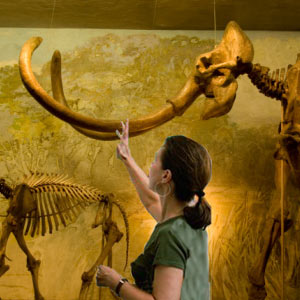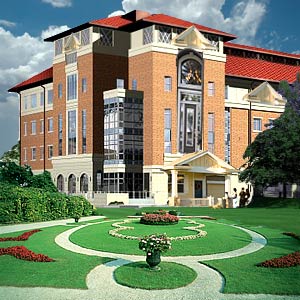Museum Curator
A museum curator acquires displays, cares for, organizes, develops and oversees collections of artifacts or works of art and valuable historical items. Read on to learn more about career options as a museum curator.
Museum curator responsibilities
- The primary job of a museum curator is to acquire items for collections and this involves selection, purchase and borrowing items of art.
- The museum curator has to examine the items and check for their authenticity and present condition before planning to display in the museum.
- A museum curator has to catalogue and organize records of museum items and exhibition of collections.
- It is the job of a curator to maintain the collections in coordination with other technicians and conservators.
- Museum curators organize educational and public outreach programs. They assist in organizing tours, workshops and classes.
- Curators also organize displays and exhibitions.
- They lecture and write about collections and answer public enquiries.
- Museum curator's job includes traveling or arranging for loan exhibitions.
- Curators handle objects found in cultural, biological and historical collections such as textiles, paintings and sculptors.
- Museum curators are responsible for ensuring that rare and unique specimens are preserved for future studies by other scientists. Curators help to retain the legacy of a wide variety of selected objects for posterity.
- Museum curators are also involved in publicity and fund raising. They are expected to participate in grant writing to support their projects.
- In several museums, curators also manage budgets.
- Identifying and researching for items of value is the domain of a curator.
- Museum curators help in publication programs and establishing networks with other professionals whenever necessary.
Educational qualifications
A museum curator usually requires to hold a graduate degree, post graduate certificate, diploma or masters in museum or heritage studies. Specialization in particular area such as archeology or fine arts, anthropology or decorative art, natural history or science or technology will help. Ideally having double master's degree, with one in museum studies and other in a specialty will help to stand out above most in the job market competition.
The position of a curator in a natural history or science museum may require Ph.D. degree as well. Related work experience is preferred by most employers. Many curators work in museums while completing formal education to enable gain hands-on experience which is required.
Personal skills
- Deep appreciation of history of science, environment, arts is essential
- Patience becomes necessary while dealing with staff and public
- Ability to pay attention to detail.
- An objective and methodical approach to work
- Good oral and written communication skills
- An in built ability for scholarly work should be a distinct advantage.
Professional capabilities
- Administrative and managerial responsibilities
- Knowledge of business administration, public relation and fund raising
- Museum curators need computer skills and ability to work with electronic databases.
- Knowledge of digital imaging, scanning technology and copyright infringement
- Creative flair to design and present exhibits in a novel and attractive fashion and build / restore objects.
- Understanding of methods for dissemination of information to the general public.
- Good organizational and decision making ability
Museum curator's work environment
Normally in large museums curators have specialized responsibilities. In smaller museums they have a wide range of tasks to perform. The working environment of curators is bound to vary depending on the kind of museum they are engaged in. For instance, curators who work in zoos, botanical gardens and outdoor museums have to frequently walk great distances.
This is also true of curators working in historical sites. While some curators spend most of their time working with the public by providing reference assistance and educational services, some others perform research and process records which mean working alone or with few assistants. Those curators who restore and install exhibits have to perform physical tasks of lifting heavy record containers and objects, climbing and stretching.
Museum curators usually work for about 36 hours a week. Sometimes they may have to work on weekends. Part time jobs are also available. The type of museum determines environment and duty hours for a curator. The work of curator is usually indoors. Travel is rare for curators employed in small institutions. However curators of large museums need to travel extensively on field study and to identify exhibits, arrange to carry artifacts and organize exhibitions for public. Employment opportunities for curators can be found in:
- National museums often funded by governments
- Regional and local museums
- University museums and
- Independent specialist museums.
Curators use professional assistance from archivists, conservators and museum technicians to perform the management and maintenance task of the museum. Archivists help the curator to maintain records. They ensure easy retrieval of documents.
Conservators perform the task of managing, caring for, preserving, treating and documenting works of art and artifacts or specimens that may require substantial historical, scientific and archeological research. Conservators also document their findings to minimize the deterioration and to restore them to their original state. Museum technicians assist the curator in preparatory and maintenance tasks on museum items. Some technicians help the curator with research work.
Top of the Page: Museum Curator

 Career Development
Career DevelopmentWoman in the Workforce - Work ethic, work spirit and latest happenings on the work scene ...
Career Choices for Women - Career options, interview guides and tips ...
Women Entrepreneur Qualities - Be your own boss...
Achieving Work Life Balance - Delicate balance ...
Pre Hire Assessment - Measuring suitability ...
Ability and Aptitude Tests - Fit for the job ...
Internship Application Tips - Further your prospects ...
Free Career Aptitude Test - Unique insight into your talents ...
Resume Builder - Resume tips to climb the career ladder ...
Employee Satisfaction Survey - Read the pulse of an organization ...
Gini Coefficient - Gender Income Equality ...
Career Planning
 Managing Work Stress - Juggling time and responsibilities ...
Managing Work Stress - Juggling time and responsibilities ...Midlife Career Change - Crossroads of life ...
Career Assessment - Assess your skills to choose the right career ...
Career Counseling - How can a career counselor help you? ...
IQ Score - Tests of intelligence and ability ...
Career Aptitude Test - Provide unique insight into your talents and skills ...
Free Psychometric Tests - Make right hiring decisions ...
Spatial Reasoning Tests - Visualize complex shapes ...
Performance Appraisal - Assessment for future performance or potential ...
Telecommuting - Your virtual office ...
Career Opportunity
 Biomedical Engineering Jobs - Integrate medicine and engineering ...
Biomedical Engineering Jobs - Integrate medicine and engineering ...Actuary Jobs - Evaluating future risk ...
Market Research Analyst - Researching Market Potential ...
Family Counselor - Lend a patient ear ...
Career in Botany - Explore plant kingdom ...
Pet Sitting Service - Love for animals ...
Screenplay Writing - Weaving movie magic ...
Foreign Language Interpreter - Say it right ...
Psychology Degree Career - Understanding people ...
School Psychologist Career - Collaborate with educators and parents ...
Museum Curator - Appreciation of history, environment, arts ...
Graphic Arts Career - Visualize, arrange and attract ...
Animal Care Career - Far from the routine ...
Secretarial career - Office professional ...
Investment Banker - Ample growth prospects ...
Registered Dietitian - Address nutritional needs ...
Landscape Architect - Create aesthetic surroundings ...
Retailing Management - Work with merchandizing systems ...
Gemology Career - Eye for detail ...
Summer Jobs for 13 year olds - Learn and earn ...
Human Resources Jobs - Core business driver...
Summer Teaching Jobs - Passion for teaching ...
Summer Internship Program - Valuable work experience ...
Home Caregiver - Assisted living ...
Airline Careers - Take a peek into high flying careers ...
Fitness Career - Fitness is big business ...
Chiropractor - Treatment by hand ...
Interior Design Career Guide - - What makes a successful interior decorator? ...
Nursing Career Guide - Aspects of the nursing vocation ...
Real Estate Career Opportunity - Careers in land and property management ...
Newborn Photography - Capture the innocence ...
Massage Therapist Jobs - Knead stressed muscles ...
Recreational Therapist - Promote wellness through recreational activity ...
Hypnotherapist Job - Work on the subconscious ...
Ecommerce Consultant - Benefit from an online presence ...
Franchise Consultant - Dream of your own business but don't know where to start ...
Online Career Guide
 Freelance Writing Opportunity - Provide life to words ...
Freelance Writing Opportunity - Provide life to words ...Online Tutoring Services - Learn from home ...
Effective Web Content Writing - Writing content for impact ...
Proofreading Services - Checking content for errors ...
Telemarketing Services - Talk your way through ...
Transcription Services - Highly accurate and productive ...
Hospitality Career
Culinary Art School - Whip up a great career ...
Cruise Ship Jobs - Keeping up with increasing needs ...
Event Management Jobs - Coordinating many agencies ...
Bartending Job - Non-traditional career ...
Hospitality Career - Serving people and enjoying it ...
Restaurant Management - Another management career ...
Beauty Career
 Professional Makeup Artist - Transform your look ...
Professional Makeup Artist - Transform your look ...Wedding Coordinator - An integral part of important function ...
Hair Stylist - Get your clients to look and feel beautiful ...
Beauty Makeover Consultant - Providing a makeover ...
Fashion Design Career - Flair for style ...
Modeling Career - Find out what it takes to be a model ...
Legal Career
 Loan Officer Training - Assist and guide loan applicants ...
Loan Officer Training - Assist and guide loan applicants ...Fraud investment Lawyer - Securities litigation attorney ...
Law Enforcement Career - Competitive and interesting options ...
Top of the Page: Museum Curator

